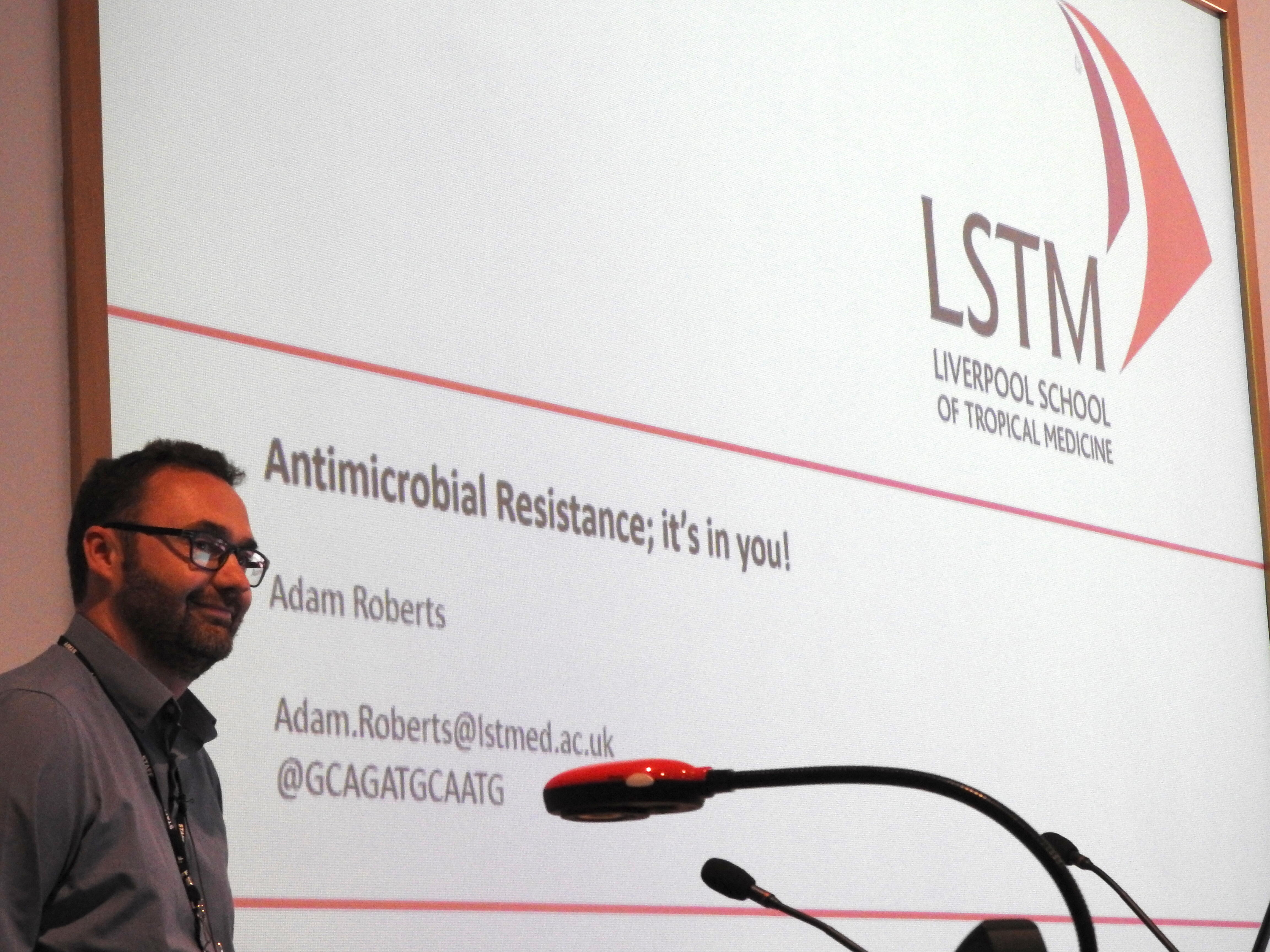
LSTM’s seminar series 2016/2017 concluded this week with a talk from LSTM’s Dr Adam Roberts, Senior Lecturer in Antimicrobial Chemotherapy and Resistance. His talk entitled: Antimicrobial resistance: it’s in you! was introduced by LSTM’s Deputy Director, Professor Steve Ward.
Dr Roberts began by looking at current predictions for the scale of the problems associated with antimicrobial resistance (AMR) as outlined in the report by economist Jim O’Neill, including the fact that by 2050 deaths from AMR are likely to overtake those of cancer globally. However, Dr Roberts pointed out that this comes with the caveat of all bacteria of medical importance becoming resistant to all antibiotics within that time, something not likely to come to pass, but still of a significant concern. When looked at financially the burden could be more that $100 trillion if not addressed.
Looking at the drivers of AMR, Dr Roberts talked about antibiotics being used in agriculture, food preparation, animals etc. and the fact that problems such as household air pollution can have an impact on the ability of bacteria to cause infections, and which can lead to resistance to treatments. To understand the impact that increased resistance could have he looked at societal reliance on antibiotics and the fact that there have been no new classes of antibiotics for over 30 years. Our reliance on antibacterial agents even predates the discovery of antibiotics themselves, with ancient cultures using mouldy bread or warm dirt to treat open or infected wounds.
He described his work prior to joining LSTM, where he studied the metagenome of the oral microbiota of people. Through this metagenomics approach he could study the mobile genetic elements, including transposons within the bacterial populations of the mouth. While at UCL, Dr Roberts began to put together a database of transposons which carry AMR genes, which is now a newly launched registry of transposons housed within LSTM and is available to scientists working across the world to register newly discovered transposon in a fully searchable repository.
Dr Roberts then moved on to look at possible solutions to AMR, referring to the 10-point plan within O’Neill’s report. He focused on the need for new drugs making reference to some of the work already being undertaken at LSTM. He felt that perhaps the biggest barrier is a lack of public understanding. While there has been the political will for action to combat AMR, the public perception of the problem still needs to be addressed.
With this aim in mind Dr Roberts has set up and is running a crowd funded citizen science project, called Swab and Send, looking for new antimicrobial agents. The project sees members of the public pledging a small amount of money and receiving swabs, which they can use to sample their local environment, then send back to Dr Roberts and his team. The project so far has already identified potential solutions from among the thousands of isolates screened, concluding that “if we don’t look, we will never find.”
You can watch the seminar here.